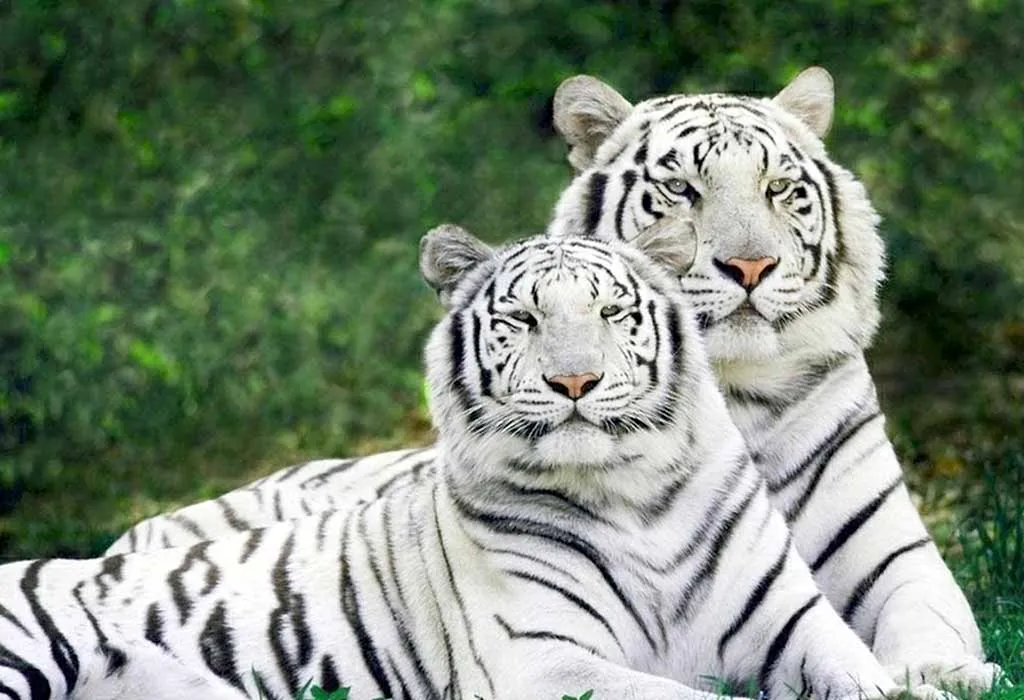Tigers are known for their striking orange fur with black stripes, which helps them blend into their natural habitat. However, there have been rare instances where tigers exhibit a white or near-white coat. These unique individuals, known as white tigers, have captured the fascination of many people around the world. In this blog, we’ll explore 10 reasons why a tiger may appear white and delve into the fascinating characteristics that contribute to this rare phenomenon.
Genetic Mutation
White tigers are the result of a genetic mutation known as leucism. This mutation affects the pigmentation of the fur, causing it to appear white instead of orange. Leucism occurs when there is a reduction in melanin production, the pigment responsible for the coloration of skin, hair, and fur.
Inherited Traits
White tigers are typically born to parents who both carry the recessive gene for white fur. This means that both the mother and father must possess the specific genetic combination for the white coat color to be expressed in their offspring.
Rare Occurrence
White tigers are extremely rare in the wild, with estimates suggesting that only one in every 10,000 tigers displays this unique coloration. This rarity has made white tigers highly sought after and admired by many.
Captive Breeding Programs
White tigers are often the result of selective breeding in captivity. Breeding programs aimed at producing white tigers have been established to meet the demand for these visually striking animals. However, it is important to note that excessive inbreeding to achieve this coloration can lead to health issues in these captive populations.
Bengal Tigers
Most white tigers belong to the Bengal tiger subspecies. Bengal tigers are native to India and are known for their rich orange fur. The occurrence of white Bengal tigers in the wild is incredibly rare.
Albinism vs. Leucism
Although white tigers may appear similar to albino animals, they are not true albinos. Albinism is a complete absence of melanin, resulting in white fur, pink eyes, and pale skin. In contrast, white tigers still possess some pigment in their eyes, making them distinct from true albinos.
Adaptability Challenges
In the wild, the distinctive white coat of a tiger can make it more challenging to camouflage and hunt successfully. The bright white coloration may hinder their ability to blend into their natural surroundings, making them more visible to prey and potential threats.
Conservation Effort
White tigers have garnered attention and interest from conservationists and animal enthusiasts alike. Their unique appearance has contributed to raising awareness about the conservation of tigers as a whole, highlighting the need to protect these majestic creatures and their habitats.
Symbolic Importance
White tigers hold significant cultural and symbolic value in some cultures. They are often associated with power, mysticism, and spiritual significance. Their rarity and distinct appearance have made them revered creatures in various mythologies and folklore.
Captivating Aesthetics
One cannot deny the sheer beauty and allure of a white tiger. Their ethereal appearance and majestic presence have captivated the hearts and imaginations of people around the world. Their white fur, contrasting against their piercing eyes, creates a truly enchanting sight.
White tigers, with their rare and captivating appearance, continue to fascinate and inspire awe in people worldwide. While they are a product of genetic mutations and selective breeding, they remind us of the incredible diversity found in nature. Whether seen as a symbol of conservation efforts or admired for their striking aesthetics, white tigers serve as a reminder of the beauty and wonder of the animal kingdom.











